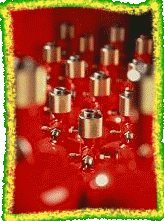|
Replacing halon gas installations
Like many things in life there are no absolutes, the choice of a
replacement for your halon based system will depend upon many
factors. Most of these have been outlined on this site but the
final decision can only be taken after consulting all the
interested parties.
This site provides an overview of the available options only. We
have available full technical and chemical specifications for the
alternatives listed together with information on where to go for
industry opinion.
As a customer focused organisation we will supply what our
customers request - this could be a halon refill at this moment in
time (January 2001). We would not, however install a new halon
based system.
We have installed many different types of extinguishing systems
and the demise of halon has opened up the choice of available
solutions. Some of our customers have removed halon extinguishing
systems and not replaced them with any gaseous based agents but
opted for the very quickest detection of a fire condition by the
use of aspirating (VESDA® & HSSD® type products) fire
detection equipment. Others have taken the closest alternative
gaseous agent and others an inerting agent. Water based systems
are now increasing in popularity as organisations start to
understand their operation.
A question often asked of our sales staff is " what is the
safest" or "best product", the purpose of the
question is obviously to extract from us a simple answer that will
give the customer peace of mind that a particular system will
provide the same protection as their old halon system, be as safe
or safer than the old system and of course last but not least,
will the system have any impact on the environment. We have to be
honest in our reply and say that all extinguishants have their
draw backs - even water based systems. If they are harmless to the
environment - they may need significant clean up, if they are fast
effective chemicals they may contribute to global warming, if they
are naturally occurring substances already contained within the
atmosphere, their extended discharge times may allow the fire to
produce greater quantities of harmful substances which could
injure personnel and cause greater property damage.
The only answer is to evaluate the risk and select the best
available product to reduce that risk to an acceptable level - a
compromise, but what's new?
|



